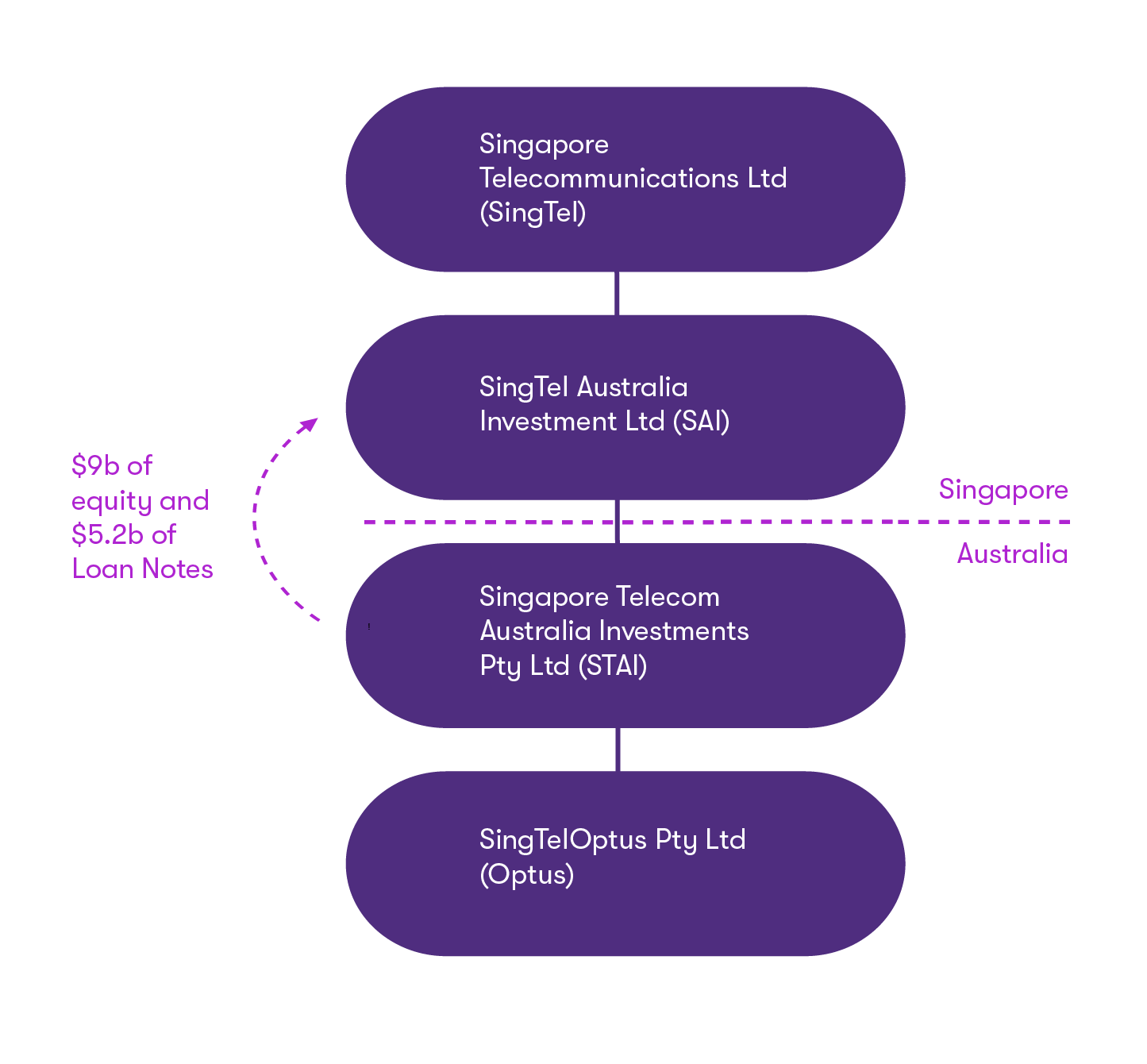- Market services
- Indigenous advisory
-
Compliance audits & reviews
Our audit team undertakes the complete range of audits required of Australian accounting laws to help you to help you meet obligations or fulfil best practice procedures.
-
Audit quality
We are fiercely dedicated to quality, use proven and globally tested audit methodologies, and invest in technology and innovation.
-
Financial reporting advisory
Our financial reporting advisory team helps you understand changes in accounting standards, develop strategies and communicate with your stakeholders.
-
Audit advisory
Grant Thornton’s audit advisory team works alongside our clients, providing a full range of reviews and audits required of your business.

-
Corporate tax & advisory
We provide comprehensive corporate tax and advisory service across the full spectrum of the corporate tax process.
-
Private business tax & advisory
We work with private businesses and their leaders on all their business tax and advisory needs.
-
Tax compliance
We work alongside clients to manage all tax compliance needs and identify potential compliance or tax risk issues.
-
Employment tax
We help clients understand and address their employment tax obligations to ensure compliance and optimal tax positioning for their business and employees.
-
International tax
We understand what it means to manage tax issues across multiple jurisdictions, and create effective strategies to address complex challenges.
-
GST, stamp duty & indirect tax
Our deep technical knowledge and practical experience means we can help you manage and minimise the impact of GST and indirect tax, like stamp duty.
-
Tax law
Our team – which includes tax lawyers – helps you understand and implement regulatory requirements for your business.
-
Innovation Incentives
Our national team has extensive experience navigating all aspects of the government grants and research and development tax incentives.
-
Transfer pricing
Transfer pricing is one of the most challenging tax issues. We help clients with all their transfer pricing requirements.
-
Tax digital consulting
We analyse high-volume and unstructured data from multiple sources from our clients to give them actionable insights for complex business problems.
-
Corporate simplification
We provide corporate simplification and managed wind-down advice to help streamline and further improve your business.
-
Superannuation and SMSF
Increasingly, Australians are seeing the benefits, advantages and flexibility of taking control of their own superannuation and retirement planning.

-
Payroll consulting & Award compliance
Many organisations are grappling with a myriad of employee agreements and obligations, resulting in a wide variety of payments to their people.
-
Cyber resilience
The spectrum of cyber risks and threats is now so significant that simply addressing cybersecurity on its own isn’t enough.
-
Internal audit
We provide independent oversight and review of your organisation's control environments to manage key risks, inform good decision-making and improve performance.
-
Financial crime
Our team helps clients navigate and meet their obligations to mitigate crime as well as develop and implement their risk management strategies.
-
Consumer Data Right
Consumer Data Right (CDR) aims to provide Australians with more control over how their data is used and disclosed.
-
Risk management
We enable our clients to achieve their strategic objectives, fulfil their purpose and live their values supported by effective and appropriate risk management.
-
Controls assurance
In Australia, as with other developed economies, regulatory and market expectations regarding corporate transparency continue to increase.
-
Governance
Through fit for purpose governance we enable our clients to make the appropriate decisions on a timely basis.
-
Regulatory compliance
We enable our clients to navigate and meet their regulatory and compliance obligations.

-
Forensic accounting and dispute advisory
Our team advises at all stages of a litigation dispute, taking an independent view while gathering and reviewing evidence and contributing to expert reports.
-
Investigations
Our licensed forensic investigators with domestic and international experience deliver high quality results in the jurisdictions in which you operate.
-
Asset tracing investigations
Our team of specialist forensic accountants and investigators have extensive experience in tracing assets and the flow of funds.

-
Mergers and acquisitions
Our mergers and acquisitions specialists guide you through the whole process to get the deal done and lay the groundwork for long-term success.
-
Acquisition search & strategy
We help clients identify, finance, perform due diligence and execute acquisitions to maximise the growth opportunities of your business.
-
Selling a business
Our M&A team works with clients to achieve a full or partial sale of their business, to ensure achievement of strategic ambitions and optimal outcomes for stakeholders.
-
Operational deal services
Our operational deal services team helps to ensure the greatest possible outcome and value is gained through post merger integration or post acquisition integration.
-
Transaction advisory
Our transaction advisory services support our clients to make informed investment decisions through robust financial due diligence.
-
Business valuations
We use our expertise and unique and in-depth methodology to undertake business valuations to help clients meet strategic goals.
-
Tax in mergers & acquisition
We provide expert advice for all M&A taxation aspects to ensure you meet all obligations and are optimally positioned.

-
Corporate finance
We provide effective and strategic corporate finance services across all stages of investments and transactions so clients can better manage costs and maximise returns.
-
Debt advisory
We work closely with clients and lenders to provide holistic debt advisory services so you can raise or manage existing debt to meet your strategic goals.
-
Working capital optimisation
Our proven methodology identifies opportunities to improve your processes and optimise working capital, and we work with to implement changes and monitor their effectiveness.
-
Capital markets
Our team has significant experience in capital markets and helps across every phase of the IPO process.
-
Debt and project finance raising
Backed by our experience accessing full range of available funding types, we work with clients to develop and implement capital raising strategies.
-
Private equity
We provide advice in accessing private equity capital.
-
Financial modelling
Our financial modelling advisory team provides strategic, economic, financial and valuation advice for project types and sizes.
-
Payments advisory
We provide merchants-focused payments advice on all aspects of payment processes and technologies.

-
Voluntary administration & DOCA
We help businesses considering or in voluntary administration to achieve best possible outcomes.
-
Corporate insolvency & liquidation
We help clients facing corporate insolvency to undertake the liquidation process to achieve a fair and orderly company wind up.
-
Complex and international insolvency
As corporate finance specialists, Grant Thornton can help you with raising equity, listings, corporate structuring and compliance.
-
Safe Harbour advisory
Our Safe Harbour Advisory helps directors address requirements for Safe Harbour protection and business turnaround.
-
Bankruptcy and personal insolvency
We help clients make informed choices around bankruptcy and personal insolvency to ensure the best personal and stakeholder outcome.
-
Creditor advisory services
Our credit advisory services team works provides clients with credit management assistance and credit advice to recapture otherwise lost value.
-
Small business restructuring process
We provide expert advice and guidance for businesses that may need to enter or are currently in small business restructuring process.
-
Asset tracing investigations
Our team of specialist forensic accountants and investigators have extensive experience in tracing assets and the flow of funds.

-
Independent business reviews
Does your company need a health check? Grant Thornton’s expert team can help you get to the heart of your issues to drive sustainable growth.
-
Commercial performance
We help clients improve commercial performance, profitability and address challenges after internal or external triggers require a major business model shift.
-
Safe Harbour advisory
Our Safe Harbour advisory helps directors address requirements for Safe Harbour protection and business turnaround.
-
Corporate simplification
We provide corporate simplification and managed wind-down advice to help streamline and further improve your business.
-
Director advisory services
We provide strategic director advisory services in times of business distress to help directors navigate issues and protect their company and themselves from liability.
-
Debt advisory
We work closely with clients and lenders to provide holistic debt advisory services so you can raise or manage existing debt to meet your strategic goals.

-
Business planning & strategy
Our clients can access business planning and strategy advice through our value add business strategy sessions.
-
Private business company secretarial services
We provide company secretarial services and expert advice for private businesses on all company secretarial matters.
-
Outsourced accounting services
We act as a third-party partner to international businesses looking to invest in Australia on your day-to-day finance and accounting needs.
-
Superannuation and SMSF
We provide SMSF advisory services across all aspects of superannuation and associated tax laws to help you protect and grow your wealth.
-
Management reporting
We help you build comprehensive management reporting so that you have key insights as your business grows and changes.
-
Financial reporting
We help with all financial reporting needs, including set up, scaling up, spotting issues and improving efficiency.
-
Forecasting & budgeting
We help you build and maintain a business forecasting and budgeting model for ongoing insights about your business.
-
ATO audit support
Our team of experts provide ATO audit support across the whole process to ensure ATO requirements are met.
-
Family business consulting
Our family business consulting team works with family businesses on running their businesses for continued future success.
-
Private business taxation and structuring
We help private business leaders efficiently structure their organisation for optimal operation and tax compliance.
-
Outsourced CFO services
Our outsourced CFO services provide a full suite of CFO, tax and finance services and advice to help clients manage risk, optimise operations and grow.
-
ESG & sustainability reporting
There is a growing demand for organisations to provide transparency on their commitment to sustainability and disclosure of the nonfinancial impacts of their business activities. Commonly, the responsibility for sustainability and ESG reporting is landing with CFOs and finance teams, requiring a reassessment of a range of reporting processes and controls.
-
ESG & sustainability advisory
With the ESG and sustainability landscape continuing to evolve, we are focussed on helping your business to understand what ESG and sustainability represents and the opportunities and challenges it can provide.
-
ESG, sustainability and climate reporting assurance
As the demand for organisations to prepare information in relation to ESG & sustainability continues to increase, through changes in regulatory requirements or stakeholder expectations, there is a growing need for assurance over the information prepared.

-
Management consulting
Our management consulting services team helps you to plan and implement the right strategy to deliver sustainable growth.
-
Financial consulting
We provide financial consulting services to keep your business running so you focus on your clients and reaching strategic goals.

-
China practice
The investment opportunities between Australia and China are well established yet, in recent years, have also diversified.
-
Japan practice
The trading partnership between Japan and Australia is long-standing and increasingly important to both countries’ economies.
-
India practice
It’s an exciting time for Indian and Australian businesses looking to each jurisdiction as part of their growth ambitions.
-
Singapore practice
Our Singapore Practice works alongside Singaporean companies to achieve growth through investment and market expansion into Australia.

-
 Insight Australian wine export strategies post-China tariff removalFollowing the recent removal of tariffs on Australian wine by China, the industry is keen to rebuild relations and explore the right export markets. This presents Australian wine producers with a chance to reassess their position in the global market.
Insight Australian wine export strategies post-China tariff removalFollowing the recent removal of tariffs on Australian wine by China, the industry is keen to rebuild relations and explore the right export markets. This presents Australian wine producers with a chance to reassess their position in the global market. -
 Insight Identify your opportunities in the complex landscape of fuel tax creditsThe landscape of fuel tax credits (FTC) is constantly evolving due to ongoing economic and technological developments. This dynamic environment presents both challenges and opportunities for businesses with significant fuel consumption.
Insight Identify your opportunities in the complex landscape of fuel tax creditsThe landscape of fuel tax credits (FTC) is constantly evolving due to ongoing economic and technological developments. This dynamic environment presents both challenges and opportunities for businesses with significant fuel consumption. -
 Client Alert March 2024 Update: NSW Grants for Net Zero Manufacturing and Physical SciencesSome major NSW grant programs have been announced, supporting projects in clean technology innovation, low carbon product manufacturing, renewable manufacturing and physical sciences.
Client Alert March 2024 Update: NSW Grants for Net Zero Manufacturing and Physical SciencesSome major NSW grant programs have been announced, supporting projects in clean technology innovation, low carbon product manufacturing, renewable manufacturing and physical sciences. -
 Insight Navigating a complex Agribusiness, Food and Beverage deals landscape in 2024Despite a 14% global decline in Agribusiness, Food, and Beverage M&A deals, 2024 shows promise with expected global interest rate stabilisation. Given the sector's role in global sustainability, businesses can tap into opportunities in food manufacturing and waste minimisation.
Insight Navigating a complex Agribusiness, Food and Beverage deals landscape in 2024Despite a 14% global decline in Agribusiness, Food, and Beverage M&A deals, 2024 shows promise with expected global interest rate stabilisation. Given the sector's role in global sustainability, businesses can tap into opportunities in food manufacturing and waste minimisation.
-
Renewable Energy
Transformation through energy transition

-
Business Planning and Strategy
Having an honest, broad-reaching and thought-provoking discussion with a skilled, independent advisor can be the catalyst for clarity – a direction to take your business forward and an understanding of what is key to success.

-
Flexibility & benefits
The compelling client experience we’re passionate about creating at Grant Thornton can only be achieved through our people. We’ll encourage you to influence how, when and where you work, and take control of your time.
-
Your career development
At Grant Thornton, we strive to create a culture of continuous learning and growth. Throughout every stage of your career, you’ll to be encouraged and supported to seize opportunities and reach your full potential.
-
Diversity & inclusion
To be able to reach your remarkable, we understand that you need to feel connected and respected as your authentic self – so we listen and strive for deeper understanding of what belonging means.
-
In the community
We’re passionate about making a difference in our communities. Through our sustainability and community engagement initiatives, we aim to contribute to society by creating lasting benefits that empower others to thrive.
-
Graduate opportunities
As a new graduate, we aim to provide you more than just your ‘traditional’ graduate program; instead we kick start your career as an Associate and support you to turn theory into practice.
-
Vacation program
Our vacation experience program will give you the opportunity to begin your career well before you finish your degree.
-
The application process
Applying is simple! Find out more about each stage of the recruitment process here.
-
FAQs
Got questions about applying? Explore frequently asked questions about our early careers programs.
-
Our services lines
Learn about our services at Grant Thornton
-
Current opportunities
Current opportunities
-
Remarkable people
Our team members share their remarkable career journeys and experiences of working at Grant Thornton.
-
Working at Grant Thornton
Explore our culture, benefits and ways we support you in your career.
-
Current opportunities
Positions available.
-
Contact us
Get in touch
This outcome highlights the Australian Taxation Office’s (ATO) focus on multinational tax avoidance through debt funding arrangements to engage in transfer mispricing. Further, it provides valuable insights on key factors that should be considered and documented when pricing cross-border financing arrangements.
STAI was found to owe the ATO approximately $268m in tax (and an additional $125m in interest and penalties). This tax liability arose from the $895m in debt deductions that had been claimed by STAI for interest payments made from 2010 to 2013 on a cross-border financing arrangement with an offshore related party.
In the decision handed down on 8 March 2024, the primary judge agreed with the Commissioner that the debt funding arrangement had been structured in a way that resulted in STAI paying excessive amounts of interest than would have been expected had the parties been dealing at arm’s length. The SingTel Group was therefore found to have obtained a transfer pricing benefit via their debt deductions.
The facts

In October of 2001, SingTel Australia Investments Ltd (SAI) located in Singapore acquired an Australian telecommunications business now known as SingTelOptus Pty Ltd (Optus). The decision was subsequently made to change the holding structure of Optus, and in June of 2022, SAI sold all of its shares in the Optus business to STAI. STAI’s acquisition of 100 per cent of the issued share capital was funded through a combination of debt and equity, and for the purposes of this article, we will focus on the debt component (namely, $5.2b of Loan Notes).
A Loan Note Issuance Agreement (LNIA) was entered into between SAI and STAI under which the amount of $5.2b was advanced. The initial terms of the LNIA were such that the Loan Notes were denominated in AUD with a tenor of 10 years. The interest rate payable was a floating rate of 1 year Bank Bill Swap Rate (BBSW) plus 1 per cent per annum (grossed up for withholding tax).
The LNIA also carried a unique term stating interest payments were not required by STAI until a ‘variation notice’ had been issued by SAI. SAI could effectively determine when, over the 10-year term of the LNIA, STAI was required to pay interest and in what amount. However, under the terms of the LNIA, the liability to pay interest still accrued. It was the timing of the obligation to make payment which could be deferred.
The LNIA was amended on three occasions, as outlined below:
- On 31 December 2002, the maturity date was reduced by one day.
- On 31 March 2003, the terms were changed with retrospective effect such that interest was only accrued and payable once certain benchmarks relating to Optus’ financial performance were met. The interest rate was also increased by adding a ‘premium’ of 4.552 per cent.
- On 30 March 2009, the floating interest rate of rate of 1-year BBSW was amended to a fixed interest rate of approximately 6.835 per cent. The effective interest rate after the 1.000 per cent margin, the 4.552 per cent premium and the withholding tax gross-up was 13.27 per cent.
On 28 October 2016, The Commissioner issued STAI with notices of amended assessments based on transfer pricing determinations made under Division 13 of the Income Tax Assessment Act 1936 (“ITAA 1936”) and Subdivision 815-A of the Income Tax Assessment Act 1997 (“ITAA 1997”) for each of the 2011, 2012, and 2013 tax years. The object of these amended assessments was to disallow approximately AUD 895 million in interest deductions. These were objected to by STAI in December 2016. When The Commissioner denied STAI’s objections, STAI took the matter to Court. On 17 December 2021, the Federal Court found in favour of The Commissioner
Grounds of appeal
STAI lodged an appeal against the original decision of the primary judge. Of note, STAI’s appeal was put forth on the comprehensive basis of 49 separate appeal grounds that were grouped into seven alleged errors. While we will not go into further detail around the separate appeal grounds, in the decision that was handed down on 8 March 2024, all grounds of appeal were dismissed by the Full Federal Court.
The key takeaways or findings from this case are outlined below:
Key findings
The primary judge noted that the amendments made to the LNIA in 2003 and 2009 lacked commercial rationale, and independent parties were unlikely to have agreed to these. More specifically:
- The 2003 amendment imposed a profitability benchmark which exposed both parties to commercial risk i.e., STAI may never have reached the required profitability and could therefore have avoided interest payments for the entire tenor of the loan, or alternatively STAI may have reached the required profitability earlier than accounted for and therefore paid an excessive amount of interest. Further, the 2003 amendment resulted in SAI forgiving approximately $286m of accrued interest, an amount which is unlikely to have been forgiven in similar circumstances between independent parties.
- An independent party in the same position as STAI was unlikely to have agreed to the 2009 amendment to change the 1-year BBSW rate to a fixed rate of 6.835 per cent given the floating rates were dropping at the time and the transaction only had 3.5 years left to run.
The above reiterated the importance of having regard to the arm’s length principle when pricing transactions, and echoed the importance of commercial realism and consideration of whether independent parties would enter into the same or similar arrangements.
The transfer pricing provisions in Division 13 of the ITAA 1936 and Subdivision 815-A of the ITAA 1997 both require the use of ‘hypotheticals’ to ascertain whether the interest amounts paid by STAI to SAI were arm’s length and if not, then to determine the quantum of any transfer pricing adjustments. This is done by seeking to understand what independent parties in the positions of STAI and SAI might have been expected to have done. In the SingTel decision, it was confirmed that the hypothesis should be as close as possible to the actual terms of the arrangement or characteristics of the parties in question.
The primary judge noted that a number of factors are taken into account by credit rating agencies such as Standard & Poor’s and Moody’s when determining the credit rating of a subsidiary. Such factors include implicit parental support, business risk, and financial risk. Notably, this idea of increased creditworthiness for subsidiaries due to group membership is not new and the SingTel outcome confirmed the ATO’s view that parental affiliation should be considered when pricing debt.
Further to the point above, the primary judge noted that given the size of the loan, the general expectation of independent lenders to obtain a security particularly for a borrowing of this size, and the fact that SingTel had provided a parent guarantee for a bank facility for another subsidiary in the Group in the month before the LNIA was entered into, all assisted in indicating that an explicit guarantee might have reasonably been expected to be included in the LNIA. Further, expert evidence illustrated a parent guarantee was likely to have significantly decreased the interest rate on the loan, which an independent parent company in SingTel’s position would reasonably have leveraged to ensure a reduced overall borrowing cost for the Group.
In addition, the idea of whether the issuance of a parental guarantee (explicit or implicit) should attract an arm’s length guarantee fee was discussed. While the verdict in this case was that there was insufficient evidence to conclude a guarantee fee might reasonably have been expected to be paid by STAI to its parent, this case affirmed there may be instances guarantees should incur a separate additional fee.
When the LNIA was entered into, the interest liability pertaining to the arrangement could be deferred and capitalised, and withholding tax was therefore payable by STAI in Australia in relation to the accrued interest amount. When the 2003 amendment was put through, the benchmark which was introduced deferred the accrual of interest. The Court concluded there did not appear to be any commercial rationale for the 2003 amendment, apart from to avoid the payment of withholding tax (at least for a time). This was not considered further in the case given the definition of a transfer pricing benefit in Subdivision 815-A is more narrowly defined than Subdivision 815-B and does not consider underpayment of withholding tax. The Commissioner may arrive at a different outcome should an assessment be made under Subdivision 815-B.
It was confirmed that Subdivision 815-A of the ITAA 1997 operates in a way that delineates the amounts of profits corresponding with a particular income year, as opposed to profits accrued over the totality of the arrangement. To clarify, where an intercompany arrangement spans 10 years for example, the outcome at the end of each income year should be assessed to confirm whether any transfer pricing benefit has arisen as opposed to the outcome at the end of the 10-year period.
Recommendations for impacted taxpayers
All taxpayers with existing cross-border financing arrangements or taxpayers considering entering into intragroup debt funding arrangements should take heed of this outcome, and:
- Seek appropriate advice when setting the terms and conditions of their agreements as the Court has shown they place significant reliance on this.
- Frequently review their debt funding arrangements to ensure the terms and conditions documented reflect the commercial substance of the arrangement.
- Ensure any amendments to intercompany loan agreements can be commercially rationalised and are contemporaneously documented to illustrate and support that independent parties would have accepted similar amendments in the same or similar circumstances.
- Consider implementing a policy with respect to parent company guarantees, borrowing at the lowest available cost of funds (where this is commercially rational), and explicit support.
- Maintain evidence of the commerciality of intragroup debt funding arrangements.
Concluding remarks
While the ATO had previously identified intragroup debt funding as a high focus area, this landmark outcome in addition to other landmark cases such as Chevron and Glencore, continue to highlight the importance of multinationals performing a two-sided analysis to ensure intercompany arrangements are commercially rational for all parties to the arrangement. Further, the outcome reaffirms the value placed by the Court and ATO on taxpayers having contemporaneous documentation to evidence or support their transfer pricing positions. It is therefore integral for taxpayers to seek appropriate advice when setting the terms and conditions of their agreements, and to review their transfer pricing arrangements annually.
We’re here to help
Please contact Jason Casas, Christine Cornish, Keith To, or Arani Ganendren if you wish to discuss the above or the broader implications of this outcome further.





































